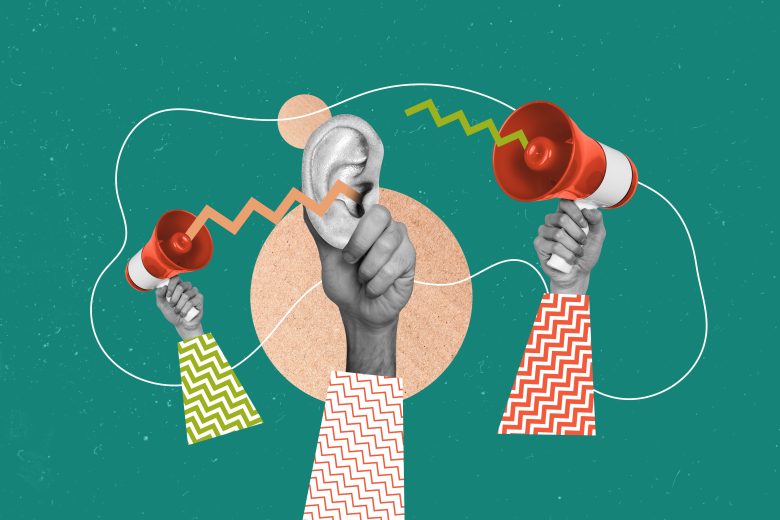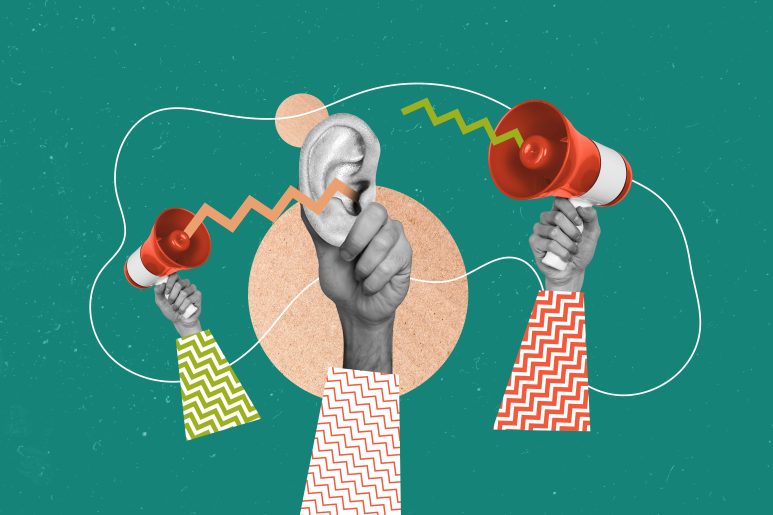By Dr Aida Al- Kaisy, Media Development Consultant and Academic Researcher
What is the future of journalism? This is the question on everyone’s lips. Is it AI? Is it hybrid newsrooms? Is it news influencers? Or is it greater inclusion, diversity, and equity in newsrooms and in content?
Thousands of media practitioners, journalism students, media development professionals and more gathered in Perugia, Italy in April 2024 to discuss and learn more about these and other issues from their peers and colleagues from around the world.

I was one of them, representing Jummar, an Iraqi independent media platform, and as a participant on a panel to discuss media in exile.
Perugia, a favourite of the media and journalism industry
The International Journalism Festival in Perugia has become a firm favourite in the ever-growing calendar of media and journalism industry events. Founded in 2009, its beautiful location and the many medieval buildings in which conference panels and sessions are held are trumped only by the wide range of speakers and panels that the festival hosts every year. Although it is held in Europe, the festival is international in its scope and attracts journalists from around the world. On the bus from Rome airport alone, I met a local journalist from India, a colleague from Iraq, a Gazan journalist now based in Turkey, as well as journalists from Slovakia, Nigeria, and the UK. But does the festival’s international scope really reflect the needs, ideas, and challenges of all journalists? Is the festival really as inclusive as its title purports it to be?
The festival panels fall under a number of different thematic areas. Diversity and Inclusion is one of them. Decolonising journalism is another. Media in exile, media in war zones and other categories also included the perspectives of journalists and media from around the world.
I attended two panels on the horrific ongoing conflict in Gaza which presented the experiences and responses of Palestinian journalists, women and men, as well as the experiences of Arab newsrooms when covering the war. These are stories and voices that need to be heard and it is easily argued that there could have been more.
Unfortunately, there was little, if any, representation from Sudanese, Yemeni, and Libyan journalists whose stories also need to be heard. Is there only room for one war from the Middle East to be discussed at such fora?
2024, a year of elections
Some are calling 2024 the year of elections – 80 countries have been or will go to polls – with a number of notable elections which might bring about seismic changes to the status quo.
The Indian election was underway over the course of the festival in Perugia and a number of speakers and panels eloquently discussed the challenges brought about by social media, the consequences for democracy as well as the innovative practices of independent media in India.
South Africa was also rightly well represented. Yet, only one panel covered Indonesia’s controversial election and there was no one from Venezuela, Senegal, Chad, or Sri Lanka. All power to the festival for including these panels but does it need to think more carefully about how it curates such panels in order to ensure that representation is more diverse and inclusive?
It was inspiring to a see a significant number of women on many of the panels. Gender was featured across a number of issues from science to young women’s magazines to rising authoritarianism and gender. However, non-binary gender topics were scarce – one panel in fact – despite the growing challenges that covering queer issues and LGBT+ topics brings for journalists.
A festival open to all
One aspect of the festival in its favour in terms of inclusivity is the fact that the festival is free and open to anyone to attend. It is also relatively easy to find affordable accommodation if you are happy to be outside of the main city area.
Many journalism students from across Europe and beyond attend the festival and many people who I spoke to commented positively on the fact that they are usually put off from attending such events by unaffordable conference fees.
Attending panels aside, the festival provides significant occasions for networking and meeting people, which for early career and freelance journalists is not only welcomed but also much needed in the current climate where employment opportunities in journalism and the media are at best limited.
Towards more intersectionality
The festival included a number of panels on AI and technology, both critical issues for the industry. One of the criticisms of AI might be that it is distributed unevenly between Northern and Global South newsrooms. It was surprising, therefore, to see very little representation from small South-based newsrooms on any of the technology panels at the festival.
Diversity intersects with news and technology. If we really are going to approach the question of the future of journalism, then festivals such as this – which offer a promising space for challenging preconceived notions of what journalism is expected to be – need to take the time to be more intersectional.
Diverse voices need to be included in all conversations about the future of journalism and not just siloed into discussing their own specific contexts. This is perhaps a double-edged sword because if they don’t discuss their own specific contexts then who will?
Picture from Shutterstock
Disclaimer:
The views and opinions expressed in this article are solely those of the author and do not reflect the official policy or position of the Media Diversity Institute. Any question or comment should be addressed to editor@media-diversity.org

